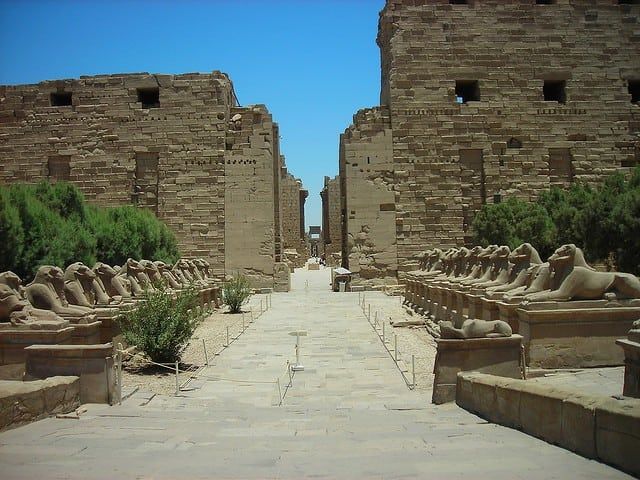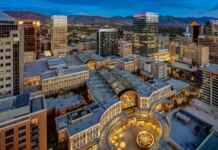The word Karnak means “fortified settlement” in Arabi. Covering an area of about 200 acres, Karnak is a city of temples located in Luxor, South of Cairo. In fact, after the Giza Pyramids, it is the most visited historical area in Egypt. Built over 2000 years, Karnak Temple also happens to be one of the largest ancient religious preservation in the world. Its ancient name was Ipet-isut, meaning “The Most Select (or Sacred) of Places”.
The construction of Karnak Temple began during the reign of Sesostris I. Around thirty different pharaohs contributed to the building process, each new pharaoh trying to outshine the predecessor. The sandstone that was used in the temple’s complex was brought from the Nile River, 100 miles away, a huge distance to cover during ancient times.
The Karnak Temple complex is huge and home to numerous temples such as Great Temple of Amon Ra, The Temple of Khonso, The Ipt Temple, The Temple of Ptah, the Temple of Montho and the Temple of the God Osiris with the Precinct of Amun-Re being the largest. However, due to restoration, only some parts of the temple are accessible to tourists. The complex was closed down in 323 AD, when Constantine the Great recognized the Christian religion, resulting in an increase in the construction of Christian churches.
Before planning a visit to the Karnak Temple in Egypt, tourists have to bear one thing very clearly in their mind, which is, that be it summer or winter, there is one entity which will be constant throughout and that is the extremely strong sun. As for rainfall, it is usually very brief and if it all happens, tends to dry out again very quickly. July and August are usually the hottest and unbearable months here. From December to February, it tends to get chilly at night. Thus the ideal months for visiting Karnak Temple, as suggested by travel experts would be any time between March and November, as the weather would be comfortable for most people.
The Karnak Temple has numerous exquisite displays of battle scenes between pharaohs and enemies, which form an essential part of the cultural history of Egypt. Some of the must visit attractions of Karnak Temple include:
• Precinct of Amun Re: Constructed by Ramesses II, Amun Re was the chief deity of the Theban Triad. The area of the sacred enclosure of Amun Re covers an area of 61 acres. The temple is surrounded by two other gigantic temples, dedicated to Amun’s wife, Mut and his son, Khonsu, respectively. It is also home to one of the largest obelisks, and the most popular attraction of the Karnak Temple.
• In order to visit the temples of Opet and Khons, a visit to the open-air assembly spot is a must!
• The Hypostyle hall: Covering an enormous area of 54,000 square feet, Hypostyle Hall happens to be one of the largest rooms of any religious building in the world. Its constructed was inaugarated by Ramesses II, the pharaoh who founded the Nineteenth Dynasty. The outer walls of the Hypostyle Hall are covered with scenes of battle.
• Attend the marvelous Sound and Light show at the Temple of Karnak for which there are a variety of timings and languages to choose from!
For those interested in cultural history and architecture during their vacations, Karnak Temple is their destination!










